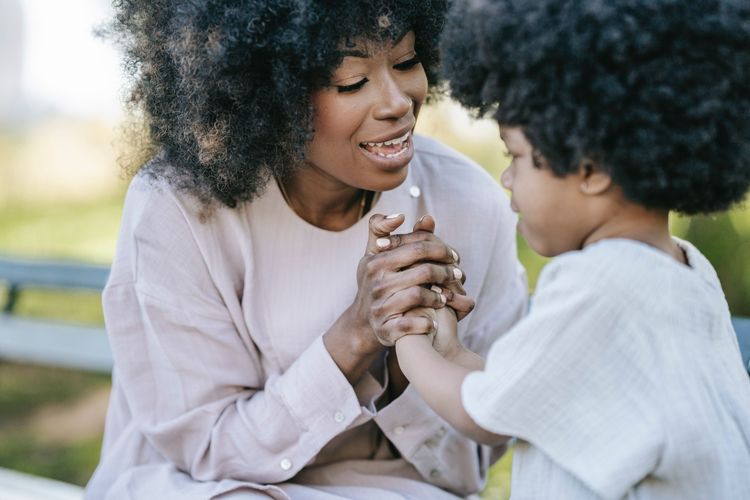
Oct 04, 2023, 4:00 am UTC
4 min
Created by
What is intergenerational trauma, and how do you find healing?
This article covers:
- What is intergenerational trauma?
- Who is most at risk for intergenerational trauma?
- What is the biology of intergenerational trauma, and what are its health impacts?
- How can you live with — and heal from — intergenerational trauma?
Much of what our families pass down to us — culture, traditions, heirlooms, and a deep sense of belonging — is beautiful. But that’s not all we inherit. Their pain, suffering, and trauma, quite literally, are also ours to bear.
Inherited trauma, also known as intergenerational trauma, begins when a family member experiences one or a series of deeply painful and shocking events that result in long-term emotional, physical, and psychological distress. The difficulty of coping with this stress actually changes the way a person’s genes function.
But what makes intergenerational trauma even more insidious is the fact that these genetic changes get passed on to future generations. This creates a ripple effect that impacts the health and well-being of family members — and sometimes entire communities — for decades.
Intergenerational Trauma
“Intergenerational trauma is expressed when the descendant of someone who experienced a traumatic event presents challenging emotional and behavioral reactions that are similar to their ancestor or relative."
Source: American Psychological Association
In the following article, we will explore the origins of intergenerational trauma and shed light on the potential for healing in the face of this inherited burden.
Who is most at risk for intergenerational trauma?
Though everyone is susceptible to intergenerational trauma, ethnic, racial, gender, and religious minorities face a much higher risk than other groups. This is because they’re more likely to face a series of life-altering stressors, such as:
- Abandonment
- Physical, sexual, emotional, psychological, and substance abuse
- Chronic illness or serious injury
- Natural disaster
- War or genocide
- Slavery
- Immigration and forced migration
- Poverty and food insecurity
- Incarceration
- Oppression and discrimination
Indeed, much of the emerging research on intergenerational trauma and its downstream effects focuses on Holocaust survivors and their children and grandchildren, and on the intergenerational impacts of displacement and residential schools on Indigenous peoples of North America. Some researchers have also explored the multigenerational impacts of slavery and structural racism on African Americans, the Khmer Rouge killings on Cambodians, and the Rwandan genocide.
What is the biology of intergenerational trauma, and what are its health impacts?
Trauma leaves a deep mark on us. Studies have shown long-term exposure to the primary stress hormone, cortisol, disrupts almost all body processes. The hormone is responsible for activating the brain’s motivation and fear regions, putting the body in a fight-or-flight state, and slowing down functions that aren’t essential for immediate survival.
Typically, cortisol levels drop as soon as the perceived threat has passed. However, when people are exposed to constant stressors, the brain and body remain in that fight-or-flight state. This leads to an array of biological changes — some even on the genetic level.
Specifically, a growing body of science says these stressors can lead to epigenetic changes — special chemical marks that are added or removed from our genes as a result of our behaviors, experiences, and the environment. These chemical marks do not alter the DNA sequence; they change the way different proteins work in the body.
Changes in the functions of these proteins have been linked with several health problems, including stress and mood disorders, cardiovascular disease, and chronic pain.
But the consequences of these changes don’t end there. They get passed down to family members for generations, allowing the trauma to manifest in different ways for decades — not only in the genes of a trauma survivor’s children and grandchildren but also in their habits, coping mechanisms, and behavior patterns.
Some common signs and symptoms that capture how intergenerational trauma can erode one’s health include:
- Low self-esteem
- Shame
- Damaged cultural identity
- Emotional numbing and disassociation
- Post-traumatic stress disorder (PTSD): hypervigilance, memory loss, nightmares
- Irritability and difficulty with anger management
- Insomnia
- Anxiety: heart palpitations, upset stomach, hot flashes, feeling of dread
- Depression: isolation and withdrawal, recurring thoughts of death
- Unresolved grief
- Lack of trust in others
How can you live with — and heal from — intergenerational trauma?
The mental health of people from historically marginalized groups is vital for communities to thrive. However, due to structural barriers, many BIPOC individuals find themselves bearing the burden of their ancestors’ pain. Working through intergenerational trauma can offer them a path to healing while honoring the unique experiences of their family members.
Here is some guidance on how to break the cycle of suffering in your family:
Acknowledge the unresolved trauma:
Having open and honest communication with family members — whether it’s your parents or your children — can help you move beyond denial, confront the trauma, and develop mechanisms that help you respond to it in healthier ways. You can acknowledge the trauma you or your family members have endured by sharing your experiences, asking questions, and noticing patterns, beliefs, and narratives that are holding you back.
Understand how the trauma is manifesting in your life with the help of a trauma-informed professional:
Navigating complicated emotions is hard. There are professionals who understand the effects of trauma across different facets of our lives and can offer mental health care without triggering or re-traumatizing survivors. Additionally, finding a therapist who is culturally competent — someone who understands your needs, cultural values, and perspectives — will allow you to feel seen, understood, and heard.
Heal the trauma by tapping into the support of those around you:
Create a safe space to work on healing your trauma outside the therapist’s office. This means surrounding yourself with friends and family members who can support your journey and offer you the opportunity to develop and practice healthier coping skills in your everyday life.
A word from wmnHealth:
Breaking the cycle of intergenerational trauma may not be easy, but it’s worthwhile. During your healing journey, remember that intergenerational trauma looks different for everyone, and there’s no set definition of “healing.” By acknowledging the trauma you’ve inherited from your family and choosing to let it go, you can find ways to live with a story that is unique and complicated but also complete. Most important, you can then pass healing on to the next generation.


